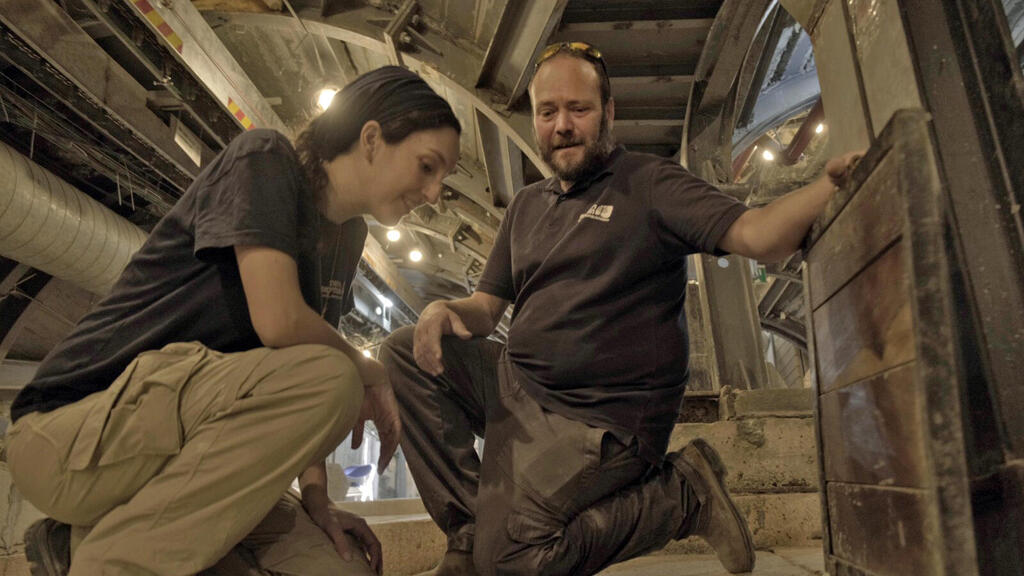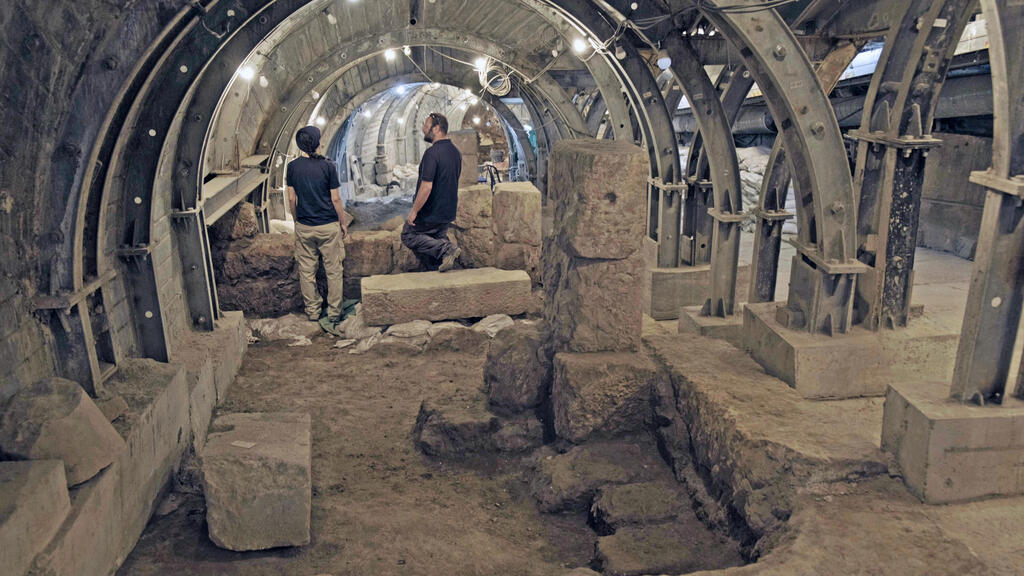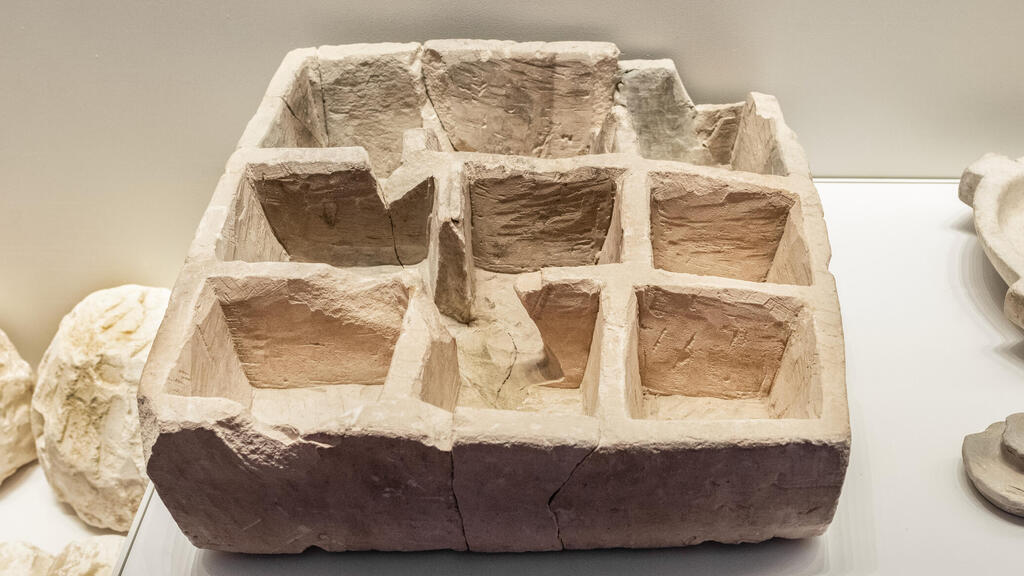Getting your Trinity Audio player ready...
A rare limestone box sectioned into nine compartments, dating back to the Second Temple period - about 2,000 years ago, is now being presented to the public for the first time in an exhibition at the Israel Museum’s Archaeology Wing.
More stories:
The unique artifact was discovered during excavations by the Israeli Antiquities Authority (IAA) in the City of David National Park in Jerusalem, which is funded by the Ir David Foundation in collaboration with the Heritage Ministry.
The box is square-shaped, measuring 30x30 cm, and is made of soft limestone (chalk) worked by a sculptor. It is divided into nine square compartments, similar in size and volume.
The edges of the artifact — uncovered during excavations along the graded street in the City of David inside a stratum from the late Second Temple period — are charred, indicating it was burned during the events of the Great Jewish Revolt that led to the destruction of Jerusalem in 70 CE.
The box with its nine compartments was exposed within the ruins of a structure standing alongside the graded street that likely served as a shop.
Researchers estimate that the vessel was used for commercial work and for the display of goods in small, measured quantities. Dr. Yuval Baruch and Ari Levi, excavation directors from the IAA, said: "During the excavations along the graded street, where the box was discovered, many other artifacts were also found, testifying to the bustling commercial activity that took place in it.”
“The findings include — among other things — pottery and glassware storage vessels, mobile and stationary production tools, cooking utensils, measuring tools, coins, and numerous stone weights, all indicating commercial activity of a vibrant urban market that operated along the street," they added.
3 View gallery


Israel Antiquities Authority archaeologists during the excavations
(Photo: Emil Aljem, Israel Antiquities Authority)
Talking about the street itself, they said, "The street served as the main thoroughfare of the city 2,000 years ago. It served pedestrians and connected the Pool of Siloam to the Temple Mount. Thus, it seems that the box is also linked to the commercial activity that took place on the street."
The IAA said Jerusalem's trade and economic systems during the Second Temple period were similar in nature to those that are known in other cities in the Roman world. It was an economy based on local production of consumable goods and their sale in markets, alongside the import of other products, some of them very exotic.
Within this framework, trade in Jerusalem had a unique factor as well, seeing its function as a center of faith for the Jewish people. Many aspects of daily life and commerce were conducted in the shadow of the Temple, especially evident in the meticulousness of the city's residents regarding matters of ritual purity and impurity.
Among the notable archaeological findings representing this phenomenon are stone vessels, thousands of which were discovered in excavations throughout the ancient city and its surroundings.
The reasons for using stone vessels are religious, rooted in the halakhic recognition that stone, unlike vessels made of pottery and metal, doesn’t become ritually impure. Therefore, stone vessels could be used over a long time and in cyclical patterns.
3 View gallery


Excavations in the City of David National Park
(Photo: Emil Aljem, Israel Antiquities Authority)
"It seems, therefore, that the stone box from the City of David is also somehow connected to this unique economy in Jerusalem, which operated under the auspices of the Temple and under strict adherence to laws of religious purity. Therefore, it can also be regarded as a distinct find for the city of Jerusalem," Dr. Baruch and Levi added.
However, the purpose of the stone box is still unclear. Fragments of a similar artifact were discovered 50 years ago by Israeli archaeologist Nahman Avigad during excavations in Jerusalem’s Jewish Quarter, humorously dubbed by him as a “snack bowl.” The nickname stuck with the artifact, and has also been used by researchers dealing with the topic.
Since then, additional fragments from similar vessels have been found in Jerusalem, specifically around the City of David. However, the recent discovery is the only known complete example in archaeological research. At this stage of the study, however, the answer to the puzzle remains unanswered.
David Mevorach, a senior curator in the Israel Museum’s Archaeology Department, added, "The box was found broken into many pieces, with some parts missing. The fragments were transferred to the Israel Museum’s preservation laboratory, where they underwent preservation and restoration by the skilled hands of Victor Uziel."
“We placed the box in our permanent exhibition, along with a group of impressive finds from the opulent houses of Jerusalem dating to the late Second Temple period – colorful frescoes and exquisite vessels made of pottery and metal."



